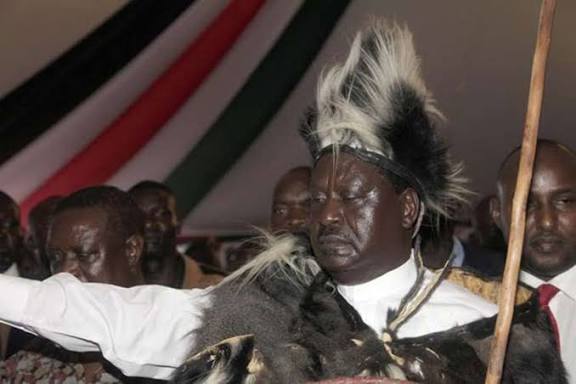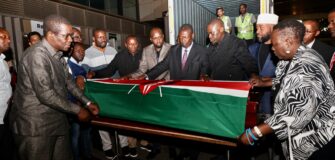Luo Traditions Observed Ahead of Raila Odinga’s Burial
Luo Traditions Observed Ahead of Raila Odinga’s Burial
Share
Former Prime Minister Raila Odinga died on October 15th, 2025, while receiving treatment in India.
After confirmation of his death, President William Ruto ordered a four-day state funeral program to honour the fallen statesman and his wishes from his will to be buried within 72 hours.
However, Raila being a Luo, the community has also organized its traditional practices to honour him.
Luo Traditional Burial Rituals Ahead of Raila’s Burial
- Announcement
The wife of the deceased is the first person to announce death through wailing before drums are beaten and messengers sent to neighboring communities and homes to spread devastating news.
In the Luo language, this stage is referred to as Tero Ywak, which marks the beginning of mourning.
According to the community, the time of announcement often depends on the age, gender, and social standing of the deceased.
- Body Preparations
Family members and elders proceed to wash the body and dress it in formal or traditional attire, and this task is performed by close relatives of the same gender.
After the cleaning exercise, the body is laid in the house or a specially prepared hut where mourners can pay their last respects.
- Vigil
This stage is referred to as arita, where members, friends, and villagers gather to mourn, sing dirges, and recount the life and achievements of the deceased.
Fires are lit outside during the night, which is known as magenga, to keep mourners warm and provide warmth to the spirit of the deceased.
Vigil night continues till the day of burial, and the body is taken to specific areas/houses in the compound.
Relatives and community members stay with the body, share memories, and offer prayers.
Also Read: Exploring Bondo,the Place Raila Odinga Called Home
- Grave digging
According to Luo customs, male relatives and neighbors dig the grave, often at night, as part of the ceremony.
The grave is usually dug on the right side of the main house for men and the left for women.
- Burial ceremony
A formal burial normally occurs inside houses or huts.
Speeches, donations, and traditional blessings are being overseen by a senior elder or clan leader to ensure the safe passage of the deceased’s spirit.
- Tero buru
A significant ritual involving cattle, where they are driven to the deceased’s home and sometimes around it before the burial.
This is a symbolic act to honor the deceased and drive away “death” or evil spirits.
Post-burial rituals
A series of rituals follows the burial, which can last for days.
Feasting
Meals are prepared and served to the family and mourners.
Shaving
Close family members of the deceased undergo the shaving process.
Visiting the Widow’s Home
A visit to the widow’s natal home is performed.
Also Read: Little Known Details of Raila Odinga’s Opoda Farm Where He Will Be Buried
Dividing Belongings
The belongings of the deceased are divided among the family members.
Social and gender considerations
Grave placement
The final resting place is determined by the deceased’s social status, with a husband’s grave typically placed to the right of his wife’s hut and facing the homestead.
Unmarried women
An unmarried woman was traditionally buried outside the homestead to symbolize that she had not fulfilled her primary role of marrying and exiting the home.
Widow’s role
A widow’s participation in the burial, particularly throwing soil into the grave, has been traditionally seen as a symbolic contract binding her to her late husband’s family and home forever, even in the event of remarriage.
Follow our WhatsApp Channel and WhatsApp Community for instant news updates

Raila Odinga in traditional attires during past traditional event. PHOTO/Standard







